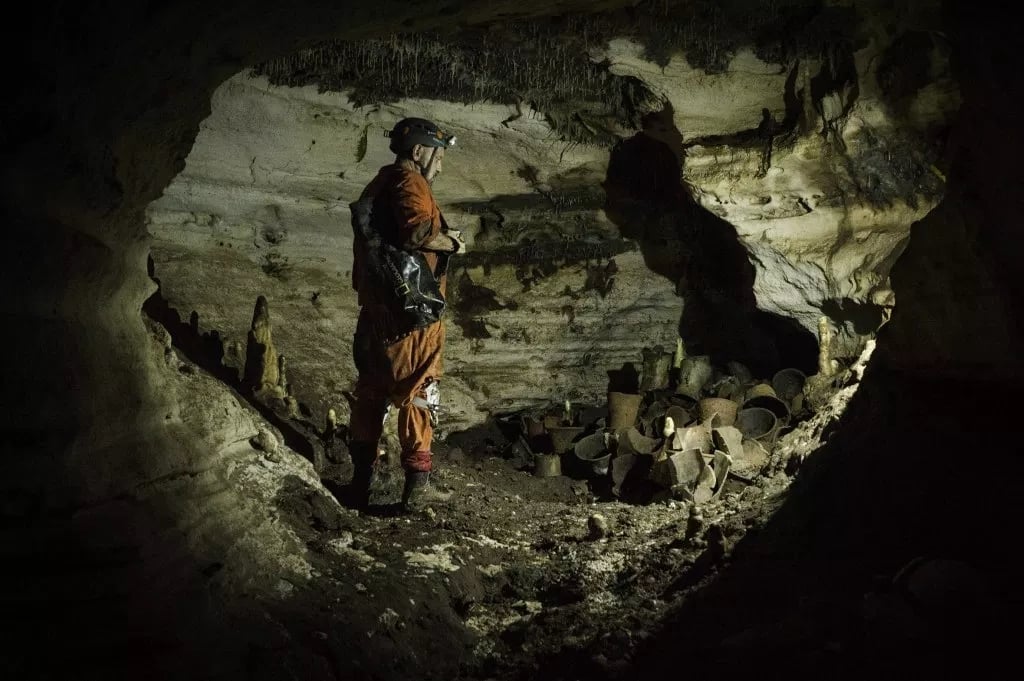
This week, a team of Mexican archaeologists made a game-changing discovery in the city of Chichén Itzá in the Yucatán Peninsula of Mexico: a cave 80 feet below ground, filled with pre-Colombian artifacts in extraordinarily well-preserved condition.
Mexico City’s National Institute of Anthropology and History made the announcement at a press conference on Monday, where archaeologist Guillermo de Anda described the cave as an “underground sanctuary” that represents a significant moment in the history of research of Maya cities and their rituals.
Named Balamkú or “Jaguar God,” the cave yielded an unparalleled trove of more than 150 objects including incense burners, decorative plates and bowls, vases, ceramic fragments, and other containers and objects. All had been untouched for more than 1,000 years.
The existence of the cave was first discovered by accident in 1969 by local farmers, but at the behest of archaeologist Víctor Segovia Pinto, it was resealed until de Anda and his team began the excavation process in 2018. Questions as to why Pinto didn’t carry out a thorough excavation at the time still remain, but the additional half-century has only contributed to the preservation of the objects.
As an archaeologist, De Anda’s exploration of the water channels beneath Chichén Itzá led to the discovery of the world’s longest underwater cave in January 2018, measuring a staggering 215 miles. The new discovery, however, was unlike anything he’d experienced.
“I couldn’t speak, I started to cry,” he told National Geographic. “You almost feel the presence of the Maya who deposited these things in there.”
The cave is laden with objects spread throughout seven ritual chambers—a big leap from the Balankanché cave that was excavated in 1959 and only contained some 70 artifacts. Prior to this discovery, Balankanché was considered the holy grail of Maya ritual sites, though the standards for archaeological research and chronological analysis have come a long way since then.
Even as it rewrites the past, de Anda also sees the new find as an opportunity to set a new standard for the future of archaeology. He tells National Geographic that he hopes to take the opportunity to demonstrate the use of cutting-edge technology like 3-D modeling and mapping programs by using Balamkú as a template for learning about the rise—and still unexplained fall—of Chichén Itzá in the 13th century.